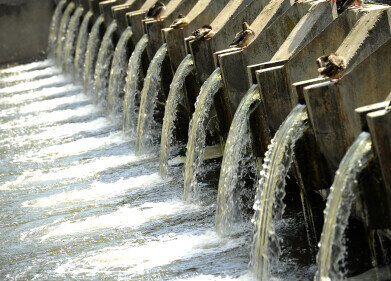Water Pollution Monitoring
Mcerts for Online Water Quality Measurement
Apr 10 2008
The certification for the Protoc 300 TOC analyser was formally awarded byCatherineWright (Head of Monitoring & Assessment, Environment Agency)
at theWWEM gala dinner in November 2006. Since the EA is promoting a “selfmonitoring†initiative to allow industry to more effectively
manage their processes and identify point source emissions, the Agency has recognised the need to be able to certificate instrumentation as “fit for purposeâ€. The MCERTS stamp of approval has been introduced to allow industry to select instrumentation which has passed a rigorous evaluation process so the data generated by these instruments can then
be used with confidence.
Whilst the premise of a certification scheme is sound, the implementation is controversial.
There are arguments for and against this type of approach.
One of the main considerations for the instrument manufacturer is the amount of cost and time associated with systematically entering various product(s) for independent testing. It is a costly exercise.
The requirement to renew certificates every five years, even if the design has not fundamentally changed, also introduces additional and arguably, unnecessary cost.
It must also be noted that currently the scheme is not uniformly applied and only applicable to the UK. Unless the scheme is more widely adopted throughout Europe, once again many manufacturers may find it difficult to justify committing such a proportionately high level of
expenditure to gain certification.
Furthermore, the assumption that a single design fits all monitoring criteria is too simplistic. The design of the complete monitoring solution may need to be adjusted to suit different applications. Effluent from an airport or an abattoir may be very different to that derived froma drinksmanufacturer. As new applications arise, the approach is limited to the original design which has been approved, therefore stifling product development.
All said, this initiative has the right objectives; that is to provide industry with some means of determining what methodologies are
acceptable for a given parameter.
The Protoc 300 model continuously reports Total Organic Carbon using a recognised UV-persulphate technology. Other methods are available, some of which are not continuous so discharge may intermittently occur unchecked and others may be optical, where every single dissolved component behaves differently.
These methods may therefore not report within the acceptable criteria defined by MCERTS are therefore rightly deemed unacceptable.
Continuous monitoring notifies the end user in real time as processes fail and automatic sample collection allows amore detailed profile
of the composition of effluents. However the threat of unannounced, spot sample collection by the Agency must be the ultimate deterrent.
Digital Edition
AET 28.4 Oct/Nov 2024
November 2024
Gas Detection - Go from lagging to leading: why investment in gas detection makes sense Air Monitoring - Swirl and vortex meters will aid green hydrogen production - Beyond the Stack: Emi...
View all digital editions
Events
Nov 26 2024 Paris, France
Nov 27 2024 Istanbul, Turkey
H2O Accadueo International Water Exhibition
Nov 27 2024 Bari, Italy
Biogas Convention & Trade Fair 2024
Nov 27 2024 Hanover, Germany
Dec 02 2024 London, UK

-min.jpg)










.jpg)






